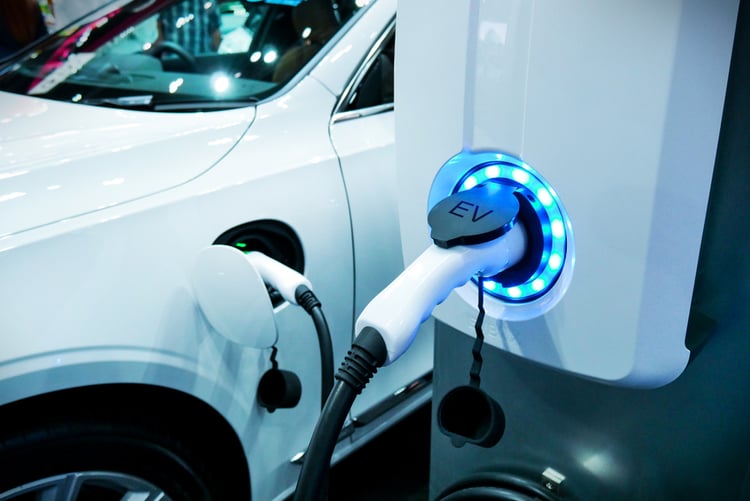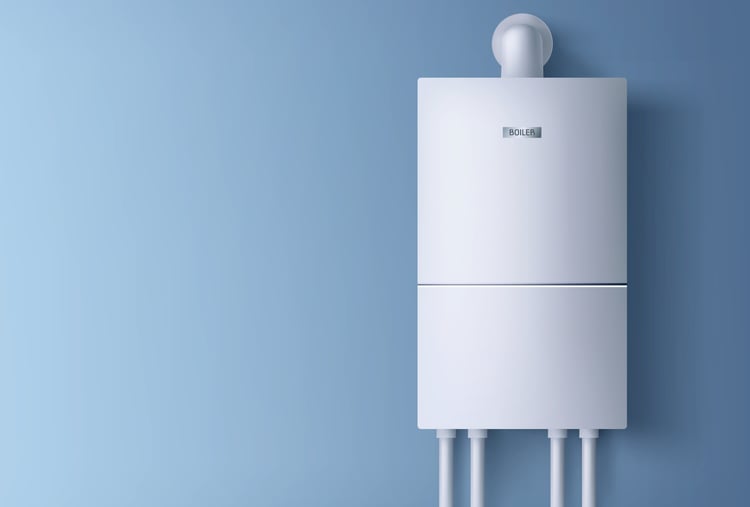4 Ways to Use Surplus Electricity Production from Solar Panels

A solar power system can sometimes generate more electricity than what your building is consuming. This is more likely around noon, since there is plenty of sunshine and solar panels can reach their maximum productivity. The inverters used by photovoltaic systems can reduce their production when generation exceeds consumption, but this represents wasted potential. Here we will discuss 4 ways to use surplus power from a solar array:
- Joining a net metering or solar buyback program.
- Recharging electric vehicles with onsite charging stations.
- Storing surplus electricity in a battery system.
- Using surplus electricity to power a heat pump and store hot water.
Surplus generation happens regularly when a building has solar panels, since production and consumption do not always match. However, if the amount of unused generation is excessive, your solar power system is probably oversized. To make sure you install the optimal solar capacity, the best recommendation is contacting a professional engineering firm.
Get a professional solar PV system design.
1) Join a Net Metering or Solar Buyback Program
There are many electricity providers who offer net metering or solar buyback programs, which let you export surplus generation to the local grid. A net metering program gives you full credit for each kilowatt-hour, while a solar buyback program assigns a different price for exported energy (normally below their retail price). In both cases, you get credit for electricity generation that would have normally been wasted.
Many states have mandatory net metering requirements for electricity providers, but the benefit is not available everywhere. There are also cases where electric companies offer solar buyback programs, but the kWh price paid to you is much lower than the retail price. If this is your situation, there are other ways to take advantage of surplus solar energy.
2) Recharge Electric Vehicles with Surplus Solar Generation

Electric vehicles are becoming more popular, especially with the recent increase in gasoline and diesel prices. According to the US Energy Information Administration, hybrid and electric vehicles reached 11% of US light-duty vehicle sales in Q4 2021. Also, the Biden Administration launched the EV Charging Action Plan, which provides $7.5 billion to help develop EV charging infrastructure in the US.
Combining solar panels with EV charging stations is a promising concept. Electric vehicle owners can use an onsite energy source, instead of depending on the grid or having to look for a charging station somewhere else. This is especially useful in buildings that get plenty of visitors around noon, such as shopping malls with convenience stores and restaurants. If the building is equipped with DC fast chargers, EVs can be fully recharged while their owners are visiting a store or having lunch.
3) Store Solar Electricity in a Battery System
Solar panels are cost-effective, but they have one major limitation compared with fossil fuels. Sunlight is only available half of the time, while fossil fuels can be consumed at any hour for power generation or heating purposes. However, when a commercial solar system is combined with batteries, it also becomes a 24/7 power supply.
A battery system is especially useful if your electricity tariff includes demand charges or time-of-use rates.
- Demand charges are calculated based on your highest kilowatt consumption during the billing period. A battery can be configured to “trim” peaks in electricity demand by supplying power, reducing the corresponding charge.
- Time-of-use rates change during the day, and electricity providers normally apply the highest kWh prices when the grid is under peak demand. With a battery system, you can avoid consumption from the power grid during peak demand hours.
Energy storage systems often qualify for financial incentives, reducing their upfront cost and increasing their ROI. The solar Investment Tax Credit also covers battery systems, as long as they are charged with solar panels.
4) Activate a Heat Pump and Store Hot Water

We tend to think about battery systems when energy storage is mentioned, but there are other options. Energy can also be stored in the form of heat, and this is useful in buildings that consume large amounts of hot water. Surplus electricity from a solar PV system can be used to power a heat pump, and hot water can be stored in an insulated tank for later use.
This can also be accomplished with a traditional resistance heater, but a heat pump is much more efficient. A resistance heater can only deliver one watt of heating for every watt of electricity, while heat pumps produce 2-4 watts of heat per watt of electricity, depending on their efficiency. To make sure you get high performance, ENERGY STAR heat pumps are recommended.

Michael Tobias
Michael Tobias, the Founding Principal of NY Engineers, currently leads a team of 50+ MEP/FP engineers and has led over 1,000 projects in the US
Join 15,000+ Fellow Architects and Contractors
Get expert engineering tips straight to your inbox. Subscribe to the NY Engineers Blog below.



